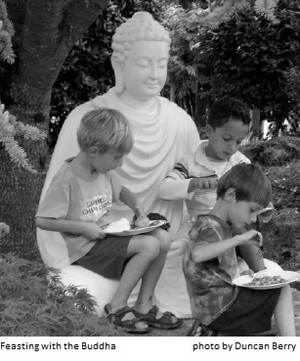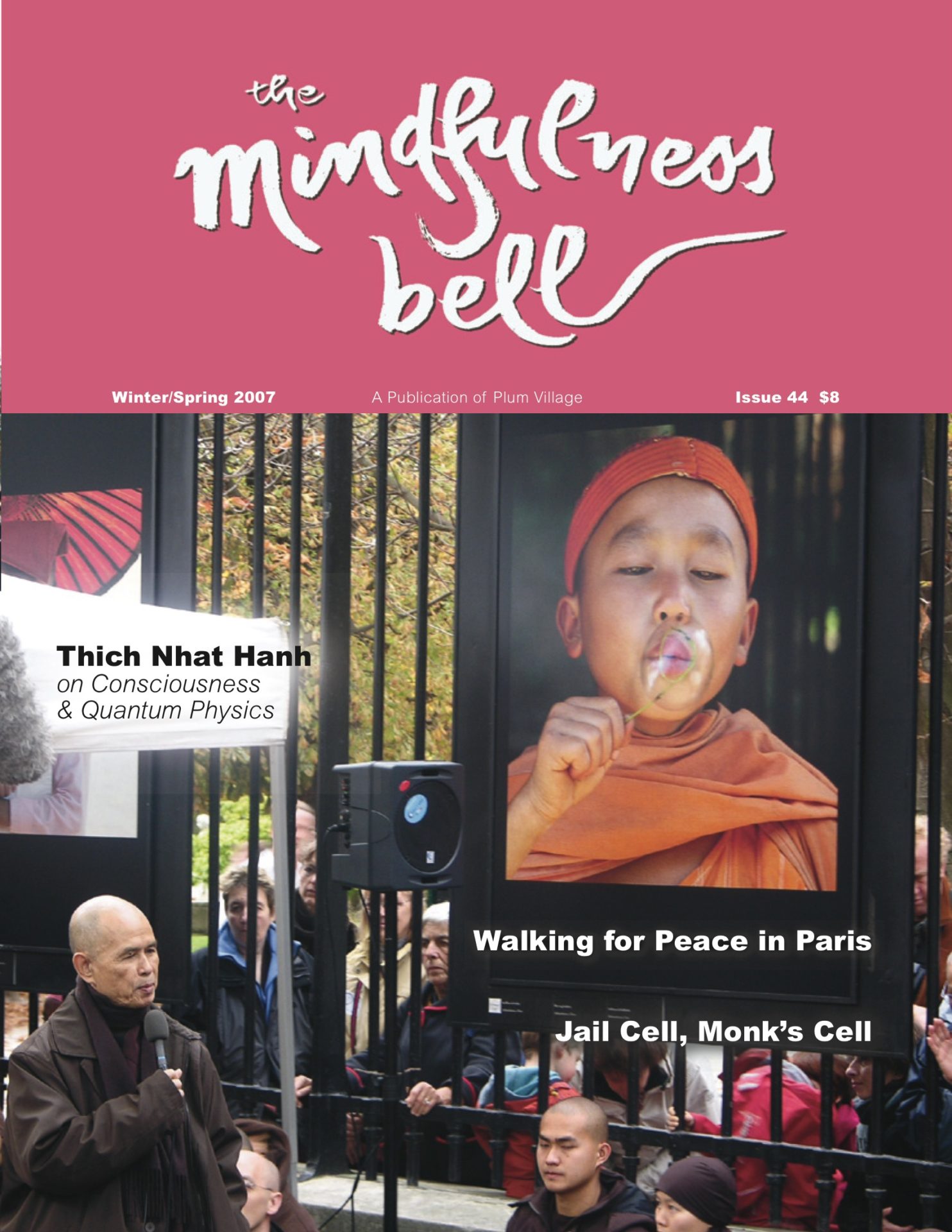
By Svein Myreng
When I was a student, almost thirty years ago, I went through a time of despair. Meeting scientifid and existentialist thinking wiped out the religious belief I once had. I found myself in a meaningless universe of dead matter, where consciousness and life seemed to be just a coincidence. This triggered a great fear of death in me, and engendered heavy questions about the meaning of life.

By Svein Myreng
When I was a student, almost thirty years ago, I went through a time of despair. Meeting scientifid and existentialist thinking wiped out the religious belief I once had. I found myself in a meaningless universe of dead matter, where consciousness and life seemed to be just a coincidence. This triggered a great fear of death in me, and engendered heavy questions about the meaning of life.
The first crack in my faith in science came when I listened to a lecture by Isaac Bashevis Singer, who had received the Nobel Prize in Literature just a few years earlier (in 1978). With his background in traditional Judaic culture, Singer’s writing is a beautiful door to deeper mysteries in life. He argued eloquently that science cannot give all the answers, and in fact, we humans know very little. Holding up his fountain pen, he said, ”If this pen is the whole of reality, our knowledge is only the little ball on its tip.”
Somewhat later, I came in touch with the writings of D.T. Suzuki. He described Zen as “acquiring a new point of view for looking at things,” beyond the conceptual divisions between inner and outer, self and others. Instead of proposing another set of beliefs, as I felt other religions did, Suzuki pointed the way to an entirely different way of experiencing reality. Most importantly, he suggested that you could seek this new way of experience yourself, beyond words and theories. For me, this was the start of meditative practice, which changed my life forever.
Science vs. Religion
My meeting with Singer and my encounter with Zen enabled me slowly to break out of the straitjacket of scientific thinking as I knew it at the time — almost entirely reductionistic and materialistic. Science has shaped the lives of everybody in the affluent world to a larger extent than we tend to realize — through technologies that have made life much more comfortable, advances in medicine, and so on. In fact, in the 1970s and 1980s in Norway, the belief was strong that science would soon replace religion completely, making the world’s faiths a thing of the past.
Therefore, it’s interesting that new discoveries in science seem to validate meditation and similar practices, which many scientists scoffed at not that long ago. From what I understand, studies have confirmed that there is a clear connection between meditation and higher activity in areas of the brain connected to happiness and well-being, and that meditation can actually change the physiology of the brain — something which goes completely against scientific belief of just a decade or two ago. As science has developed more powerful tools for investigating brain activity, it can find correlates between certain activities in the brain and certain sense activities, emotions, and so on.
Still, there seems to be some scientific arrogance when it comes to valid and invalid ways of finding knowledge. I couldn’t help chuckling a bit when I read the following quote from one scientist commenting on the happiness research: “We have all seen those Buddhists, who seem to be so relaxed and happy. Now, we actually know that they are relaxed and happy.” Apparently, happiness is not a fact before it shows up on a brain scan.
When I look at a little blue flower, though, I see a blue flower and not electrons jumping around in my brain. For the time being, there seems to be no place for my personal experience in brain research. To quote B. Alan Wallace, a scientist and a long-time student of H.H. the Dalai Lama: “Strictly speaking, at present there is no scientific evidence even for the existence of consciousness! All the direct evidence we have consists of nonscientific, first-person accounts of being conscious.”(1)
Looking at the Mind
A denial of the subjective seems to come from the old ideal in science that the observer should be as separate from the object of study as possible, with only the object side of the subject-object relationship falling within the scientific field of knowledge. This has allowed science to understand the “outer” world to a tremendously larger degree than ever before in the history of humankind, but leaves it far behind in understanding the mind.
These sharp subject-object distinctions have, however, been challenged in fields as different as quantum physics and the social sciences, where the role of the observer has turned out to be crucial. In the study of consciousness, which cannot be measured as a “thing in the world,” the subject’s perspective is even more important. This is where the great contemplative traditions enter.
An important part of what a long-term (or not so long-term) meditation practice teaches us is to look at functions of the mind in ever more subtle ways. Thoughts come and go, feelings constantly change; even the subtle impulses that come before we move a hand or foot can be seen clearly when the mind is still. We can notice how a sense perception arises when an impression, for example a sound or a bodily sensation, comes together with a sense organ, for example our ability to hear or to sense with our body.
All thoughts, feelings, impulses, sounds, forms, smells, etc. can be objects of our consciousness, but can the subject become an object? Where is the subject? What does it mean that I experience something? Where is the mind located? In an appendix to The Miracle of Mindfulness, Thich Nhat Hanh quotes Shantideva’s Siksasamuccaya:
“Mind cannot be apprehended, inside, or outside, or in between both. For mind is immaterial, invisible, non-resisting, inconceivable, unsupported, and homeless. Mind has never been seen by any of the Buddhas, nor do they see it, nor will they see it.… ‘where there is an object, there mind arises.’ Is then the mind one thing, and the object another? No, what is the object, just that is the mind. If the object were one thing, and the mind another, then there would be a double state of mind.”(2)
This quote, which has fascinated me for years, does not deal with philosophy. It is about something that is observable. My own meditation practice is not yet strong enough to go as deeply as I would like into its implications. Still, I can offer a few glimpses.
Manas at Work
When we take for granted that there is a me, an observer separate from what is observed, we aren’t looking closely enough. The impression of the distinct observer may be due to other sense impressions located in the body, or to the incessant, semi-conscious thinking that says “I am like this, this is me, this is mine.” (Manas in the vijñanavada model of consciousness.) As an example, if you have a sense impression of a tingling in your foot, do you actually experience it in your foot, or in your head? How does thought make it “my foot tingling”?

The belief that consciousness has its origin in the brain may support the illusion of the independent observer. Thây strongly challenges this view: “We shouldn’t say that consciousness is born from the brain, because the opposite is true: the brain is born from consciousness.”(3)
In my youth, I felt separate from other people, almost as if separated by a glass wall. This was probably a rather extreme feeling, and it was very unpleasant. Only a subtle separation between observer and observed, however, is enough to rob us of the greatest joy in life. Even if the barrier between me and my surroundings is ever so subtle, it’s still a barrier. When the barrier disappears, if only for a short time, the world appears completely different — sacred, beautiful. As layman P’ang in old China said, “Wonderful snowflakes, each one falls in the perfect place.”
- B. Alan Wallace, The Taboo of Subjectivity (California: Oxford University Press, 2000), page 3.
- Thich Nhat Hanh, The Miracle of Mindfulness (Boston: Beacon Press, 1975). The Siksasamuccaya is translated by Edward Conze; I have exchanged “mind” for Conze’s “thought.”
- Thich Nhat Hanh, “The Four Layers of Consciousness” in Buddhadharma: The Practitioner’s Quarterly, Summer
Svein Myreng, True Door, is a senior dharma teacher who lives in Oslo, Norway and practices with the Sangha of Floating Clouds. He thanks his wife and kalyanamitra (spiritual friend), Eevi Beck, for help with this article.

